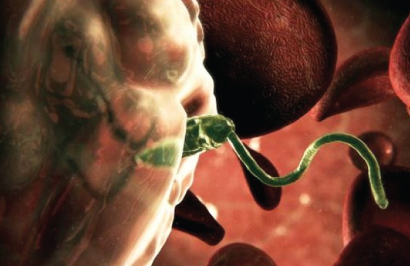
First death by human visceral leishmaniasis is reported in Porto Alegre
Data and the death serve as warning for public health epidemiological programs
09/01/2017
The State Health Surveillance Center was notified of the first autochthonous HVL case on September 27
The death of a 19-months old girl by human visceral leishmaniasis was reported in Porto Alegre on September 28 2016. According to the Rio Grande do Sul Health Surveillance Report from October 2016, the symptoms appeared on May 29 with a high persistent fever and on September 23, the situation aggravated with thrombocytopenia. During hospitalization in the Porto Alegre Clinics Hospital (HCPA) ICU, bone marrow aspiration and serology confirmed the HVL diagnosis. According to the professor at the Microbiology, Immunology and Parasitology Department at the Federal University of Santa Catarina (UFSC), Mario Steindel, as the case history shows, health professionals must be warned of the problem and the diseases dynamics. This is a completely new situation and for this reason, probably the late diagnosis, he stresses.
The absence of an urban plan and factors as, poor social-economic condition, deforestation and precarious basic sanitation, configure a greater socially and environmentally vulnerable area, contributing to the diseases settlement. Creating population centers without the least sanitary infrastructure and destroying the vectors natural flora, exposes people to the risk factors responsible for disseminating visceral leishmaniasis (VL). Probably this child acquired the infection in Morro Santana, where she lived with her family in an invasion area with precarious sanitation conditions, and where there are several reports of canine visceral leishmaniasis (CVL) since 2014, the professor explains.
Until 2007, Rio Grande do Sul was not considered a VL transmission area. In 2008, the first autochthonous case of the disease among dogs and the first vector were reported. In January 2009, the first autochthonous HVL case was confirmed in the municipality of São Borja with symptoms beginning in 2008. In the State, from 2008 to 2015, 15 HVL cases were confirmed. Other two imported cases were reported in the municipalities of Esteio in 2008 and in Nova Petropolis in 2010. The official records show autochthonous human VL cases in Rio Grande do Sul and in Paraná States. Besides this, autochthonous HVL is present in all three states in the Southern region and evidence an increase of its geographic distribution. In this sense, VL diagnostic should be added to the differential diagnostic for persistent fever associated to hepatosplenomegaly, the expert stresses.
A study developed by MSc. Catieli Gobetti Lindholz and Prof. Dr. Alessandra L. Morassutii, from the Biomedical Parasitology Laboratory at the Pontifical Catholic University of Rio Grande do Sul (PUCRS), in cooperation with Dr. Edmilson dos Santos, from the State Health Surveillance Center, and Dr. Getúlio Dornelles Souza, from the Rio Grande do Sul Central Laboratory (LACEN), investigated the occurrence and prevalence of sandflies naturally infected by Leishmania spp, in a rural place in the States Capital metropolitan area. According to Lindholz, 516 sandflies were captured in households, near these houses and in forest areas, reporting the species as Lutzomyia neivai, L. fischeri, L. migonei and L. lanei. All species, except L. lanei, had individuals which were confirmed to have Leishmania by PCR, she points while highlighting that the Leishmania DNA sequences were sequenced and identified as belonging to the Leishmania infantum complex, causative agent for visceral leishmaniasis in the Americas. Still according to her, these data strongly suggest the Leishmania protozoa circulation in the assessed area could be frequent and should serve as a great warning for the epidemiological public health programs.
Doctor Steindel agrees and alerts it is very likely that new cases will appear, once although the classic Lutzomyia longipalpis vector has not yet been reported, other sandfly species infected by Leishmania infantum have been found by researchers at PUCRS. Considering the fact that CVL is considerably expanding in the South Region, in Paraná, especially in the municipality of Foz do Iguassu, in Rio Grande do Sul, in several cities, and in Santa Catarina, in Florianópolis, it is recommended that the three states engage in joint studies to assess VLs epidemiological features for an effective parasite control, adds the expert.…










